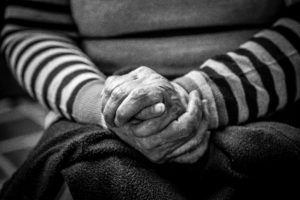By Jane Davis
There comes a time in everyone’s life as they age, that they need help with general everyday life. For some, moving into retirement communities adapted to those needs is the answer. For others, living with their children and relatives is preferred. Some seniors and their carers also choose to get involved in patient research communities as they recover. If you have decided to invite your elderly relative to live with you, you are not alone.
Issues that may arise
Issues such as communication, accessibility and mobility are common after a fall or stroke episode. When preparing to bring your relative home from the hospital, it is important to take this into account and some modifications in your home may be needed. While you may not be able to absolutely guarantee an accident free home, there are things you can do to make your home safer for an elderly loved one. Here are a few easy tips in preparing your home for having an elderly senior live with you.
Get the Appropriate Support
Many seniors as they get older require a little more assistance in carrying out everyday activities such as taking a shower or going up the stairs. As we age and particularly after a stroke, the strength in our arms or legs may be weakened. Their chances are increased of slipping or falling if they are not very stable on their feet. Keep this in mind when preparing your home.
The moisture in bathrooms and slippery flooring can be present an increased risk to an older person. Handlebars in your showers and accessible toilets are a great idea. Railways for your stairway also provide support for them when needed. Even if they are making great progress in their rehabilitation after their fall/stroke, you will be comforted knowing if there was a slip or moment of weakness, support is installed nearby to make it easier for them.
Accessibility and Mobility
Based on the layout of your home and whether your relative has mobility challenges, rethinking the layout and purchasing mobility aids may be necessary. Changing the layout does not necessarily mean major renovation but can start from simple changes such as in the kitchen. Moving essentials to more accessible and lower cupboards removes the need for them to climb and also allows them to be comfortable and independent in your home. Another great idea is consciously thinking about their bedroom. Ideally, with mobility and balance problems after a stroke you would want their room clutter free and located on the lower end of the home. Storage and shelving in their room should again be low and accessible.
For moving about, there are many mobility aids such as walkers or folding canes that can be purchased online if it is needed for support. These are great for both at home and when going out of the house. Many cases of depression are seen after a stroke and as seniors see their lives and abilities drastically change. Going for simple walks around the neighbourhood are a great activity to get some physical therapy, brighten their mood and spend time with your loved one.
Make it Easier To Communicate
The National Aphasia Association estimates that about 25 to 40 percent of stroke survivors have aphasia. A person that is left with this condition struggles with their ability to comprehend and produce language. As you can imagine, this makes communication very difficult for them and their loved ones. A great solution for this is having whiteboards in your home. They sell for just a few dollars and can be easily placed on your refrigerator or next to their chair. Being portable, it is a great tool to communicate with your relative when words fail them.
Another hack is to place a phone next to their beds and in very accessible places. Whether they are stroke survivors or not, there may be incidents as they get older where they need help. Having a way to get in touch with you or help nearby is essential.
Finally, take the time to get educated about caring for an elderly relative full time. Each condition including stroke, diabetes or recovery after cardiac arrest can come with a lot of responsibilities and require you to have knowledge of their rehabilitation schedule or medication times. Learn the common signs to look for and when to get help and educate your family. It can make a great difference by being prepared.
(Photo from Jorge Lopez)







